Mar
10
with Nels Cline Trio, Liberty Ellman & Miles Okazaki Quartet, Rez Abbasi Trio, Joel Harrison String Choir, Nir Felder Trio, Mike Moreno Trio & Camila Meza
Fri March 10th, 2017
7:00PM
Main Space
Minimum Age: 18+
Doors Open: 6:00PM
Show Time: 7:00PM
Event Ticket: $25
minimal
$35 Two-Show Tickets for this event + Alternative Guitar Summit 2017: Solo Voices & Communal Raptures on Saturday 3/11 at Nublu are available for purchase here.
Founded and produced by Joel Harrison and Life Force Arts, the Alternative Guitar Summit is a yearly gathering of some of the most creative guitarists on earth. Each year we honor a living composer in our “While We’re Still Here” series. 2017’s honoree is Pat Metheny. Metheny is celebrating the release of a book of 150 of his compositions. Seven acts will perform 14 of those pieces. Harrison will interview Metheny on stage before the show.
Alternative Guitar Summit 2017 Celebrates Pat Metheny

PAT METHENY was born in Kansas City on August 12, 1954 into a musical family. Starting on trumpet at the age of 8, Metheny switched to guitar at age 12. By the age of 15, he was working regularly with the best jazz musicians in Kansas City, receiving valuable on-the-bandstand experience at an unusually young age. Metheny first burst onto the international jazz scene in 1974. Over the course of his three-year stint with vibraphone great Gary Burton, the young Missouri native already displayed his soon-to-become trademarked playing style, which blended the loose and flexible articulation customarily reserved for horn players with an advanced rhythmic and harmonic sensibility – a way of playing and improvising that was modern in conception but grounded deeply in the jazz tradition of melody, swing, and the blues. With the release of his first album, Bright Size Life (1975), he reinvented the traditional “jazz guitar” sound for a new generation of players. Throughout his career, Pat Metheny has continued to re-define the genre by utilizing new technology and constantly working to evolve the improvisational and sonic potential of his instrument. METHENY’S versatility is almost nearly without peer on any instrument. Over the years, he has performed with artists as diverse as Steve Reich to Ornette Coleman to Herbie Hancock to Jim Hall to Milton Nascimento to David Bowie. Metheny’s body of work includes compositions for solo guitar, small ensembles, electric and acoustic instruments, large orchestras, and ballet pieces, with settings ranging from modern jazz to rock to classical.
As well as being an accomplished musician, Metheny has also participated in the academic arena as a music educator. At 18, he was the youngest teacher ever at the University of Miami. At 19, he became the youngest teacher ever at the Berklee College of Music, where he also received an honorary doctorate more than twenty years later (1996). He has also taught music workshops all over the world, from the Dutch Royal Conservatory to the Thelonius Monk Institute of Jazz to clinics in Asia and South America. He has also been a true musical pioneer in the realm of electronic music, and was one of the very first jazz musicians to treat the synthesizer as a serious musical instrument. Years before the invention of MIDI technology, Metheny was using the Synclavier as a composing tool. He also been instrumental in the development of several new kinds of guitars such as the soprano acoustic guitar, the 42-string Pikasso guitar, Ibanez’s PM-100 jazz guitar, and a variety of other custom instruments. He took the whole instrument development process into a different level with his mechanical, solenoid driven Orchestrion.
It is one thing to attain popularity as a musician, but it is another to receive the kind of acclaim Metheny has garnered from critics and peers. Over the years, Metheny has won countless polls as “Best Jazz Guitarist” and awards, including three gold records for Still Life (Talking), Letter from Home, and Secret Story. He has also won 20 Grammy Awards in 12 different categories including Best Rock Instrumental, Best Contemporary Jazz Recording, Best Jazz Instrumental Solo, Best Instrumental Composition. The Pat Metheny Group won an unprecedented seven consecutive Grammies for seven consecutive albums. Metheny has spent most of his life on tour, averaging between 120-240 shows a year since 1974. At the time of this writing, he continues to be one of the brightest stars of the jazz community, dedicating time to both his own projects and those of emerging artists and established veterans alike, helping them to reach their audience as well as realizing their own artistic visions.
***
Washington D.C. native Joel Harrison is a guitarist, composer, arranger, vocalist and songwriter. Named a Guggenheim Fellow in 2010, he has released 17 CD’s on seven record labels since 1994. Called “protean” and “brilliant” by the New York Times, Harrison has spent his career traversing across the borders of jazz, classical, rock, and classical music. He is a resident of Brooklyn NY and founder of the Alternative Guitar Summit, a yearly gathering od some of the most creative guitarists on earth.
Nels Cline Trio

Nels Cline official site | Nels Cline on Facebook | Nels Cline on Twitter
Guitar explorer NELS CLINE is best known these days as the lead guitarist in the band Wilco. His recording and performing career – spanning jazz, rock, punk, and experimental – is well into its fourth decade, with over 160 recordings, including at least 30 for which he is leader. Born in Los Angeles in 1956, Cline has received many accolades including Rolling Stone anointing him as both one of 20 “new guitar gods” and one of the top 100 guitarists of all time.
Beyond Wilco, he leads The Nels Cline Singers (featuring Scott Amendola and bassist Trevor Dunn), and plays with Fig (a collaboration with Yuka Honda), BB&C (a collective with Time Berne & Jim Black), Pillow Wand (duo with guitarist Thurston Moore), and a new duo project with jazz guitar prodigy Julian Lage. A few of the other musicians with whom he has performed and/or recorded include: Ramblin’ Jack Elliot, Yoko Ono, Jeff Gauthier, Mike Watt, Carla Bozulich, Vinny Golia, Marc Ribot, Tinariwen, Julius Hemphill, Charlie Haden, Wadada Leo Smith, Lydia Lunch, and Lee Ranaldo.
photo credit Yuka C. Honda
Liberty Ellman & Miles Okazaki Quartet
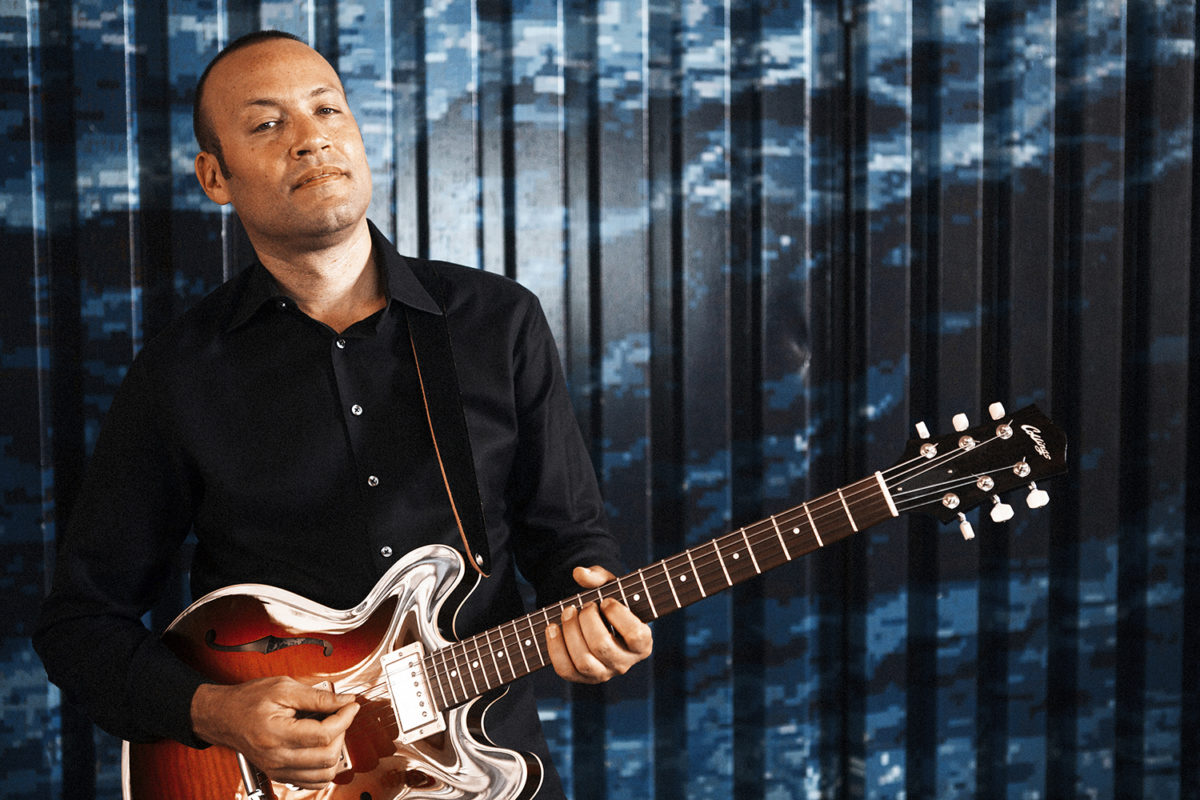
Liberty Ellman official site | Miles Okazaki official site
Based in Brooklyn New York, guitarist / composer Liberty Ellman has performed and or recorded with a host of stand out creative artists including: Joe Lovano, Myra Melford, Wadada Leo Smith, Butch Morris, Vijay Iyer, Steve Lehman, Greg Osby, Rudresh Mahanthappa, Nels Cline, Somi, Matana Roberts, Ledisi, Michele Rosewoman, Adam Rudolph, Josh Roseman, Barney McAll, Okkyung Lee, Steven Bernstein, Ben Goldberg and John Zorn. In 2014 Ellman worked with Jason Moran on Luanda Kinshasa, a video installation by visionary filmmaker Stan Douglas.
Mr. Ellman is perhaps best known for his long tenure in Henry Threadgill’s groundbreaking ensemble, Zooid. The group has recorded several critically lauded albums. Their most recent recording “In For A Penny, In For A Pound” earned a Pulitzer prize for Mr. Threadgill. In addition to playing guitar, Mr. Ellman is credited as producer and mixing engineer on that recording. He has mixed and mastered many other recordings as well, including Gregory Porter’s “Be Good,” which was nominated for a Grammy.
Ellman has released 4 of his own critically acclaimed albums: Orthodoxy, Tactiles, Ophiuchus Butterfly, and 2015’s Radiate on Pi Recordings. His compositional style has been described as “At once highly controlled and recklessly inventive,” and the Wall Street Journal said: “Ellman, along with his peers, is helping to define post millennial jazz.” Voted #1 Rising Star Guitarist in the 2016 Downbeat Critics Poll, he was also honored in the 2015 Jazz Times expanded critics poll, as one of the four guitarists of the year alongside Bill Frisell, John Scofield and Julian Lage.
Liberty Ellman has also worked beyond the jazz world: hip hop artists Midnight Voices, and The Coup, dance producer DJ Joe Claussell, and worked on remixes of N’Dea Davenport, Chico Freeman, Ann Dyer, Ayo and others. He also made an appearance on the Grammy nominated Groove Collective record, People People Music Music.
***
Miles Okazaki is an American musician based in New York City. He is known for his technical command of the guitar, his rhythmic approach to improvisation and composition, and his work in contemporary music theory.
Okazaki grew up in Port Townsend, Washington, a small town near the Olympic Mountains in the Pacific Northwest. He got his first classical guitar at age 6, and began playing regular gigs on electric guitar by age 14, after studying for several years at the Centrum Jazz Workshop. He received many awards as a guitarist throughout his early years, and eventually placed 2nd in the Thelonious Monk International Guitar Competition.
Okazaki moved to New York City in 1997 to pursue a career in music and begin writing his own material. His teacher on guitar at this time was Rodney Jones, who recommended him for his first gig, with Stanley Turrentine. Okazaki spent four years on the road with vocalist Jane Monheit, while also writing and rehearsing the music for his first album, Mirror, which was released independently. The album received a “Critics Pick” in the New York Times, calling it “a work of sustained collectivity as well as deep intricacy.” He expanded to a septet for his second album, Generations, described by pianist Vijay Iyer “the sonic equivalent of Escher or Borges, but with real emotional heft,”. His third album, Figurations, was recorded live with a quartet, and was selected as one of the New York Times top ten albums of 2012, described by Ben Ratliff as “slowly evolving puzzles of brilliant jazz logic.” In January of 2016 Okazaki recorded a new album, Trickster, that will be released later this year. Okazaki wrote, produced, and illustrated these albums.
As a sideman, Okazaki works in many areas, ranging from Standard repertoire to experimental music. Recently he has been seen most frequently as the guitarist for Steve Coleman and Five Elements. In the last few years, he has worked with a wide variety of artists including Kenny Barron, Jonathan Finlayson, Amir El Saffar, Adam Rudolph, Dan Weiss, Linda Oh, Darcy James Argue, Jane Monheit, Vijay Iyer, Francois Moutin, Doug Hammond, Carl Allen, Ohad Talmor, Mary Halvorson, John Zorn, Jen Shyu, Mark Giuliana, Patrick Cornelius, Rajna Swaminatham, Matt Mitchell, Craig Taborn, Tony Moreno, Ben Wendel, Donny McCaslin, and many others.
Okazaki currently teaches guitar at the University of Michigan. His first book, Fundamentals of Guitar, was released in 2015. He has also taught at the Banff Institute, The New School, Queens College, The Juilliard School, Amsterdam Conservatory, and many other institutions. Outside of guitar, his past teachers include Anthony Davis (composition), Ganesh Kumar (Carnatic percussion), and Kendall Briggs (counterpoint). His awards and grants include Chamber Music America’s “New Works” (2007), Chamber Music America’s “French-American Jazz Exchange” (2009), the Jazz Gallery and Jerome Foundations Residency Commission (2010), the American Music Center’s Composer Assistance Program (2011), the Mid-Atlantic Arts Foundation’s US Artists International grant (2012), the Rockefeller Brother’s Fund Artist Residency (2012), and the Jazz Gallery Mentorship program (2015). He holds degrees from Harvard University, Manhattan School of Music, and The Juilliard School, and lives in Brooklyn, NY.
Rez Abbasi Trio
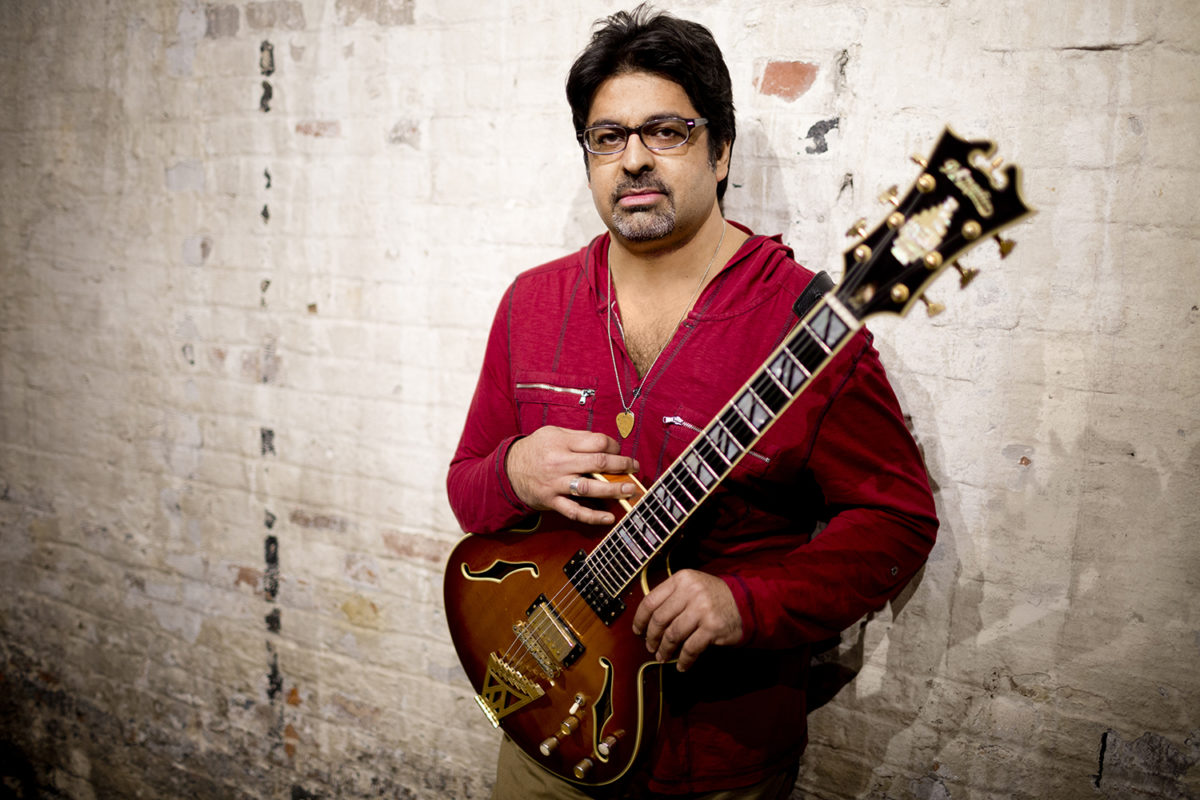
Voted #1 Rising Star Guitarist in the 2013 DownBeat Critics Poll and placed in the “top-ten Guitarists” in 2015’s poll, Rez Abbasi continues to push boundaries.
Born in Karachi, Pakistan, removed at the age of four to the vastness of Southern California, schooled at the University of Southern California and the Manhattan School of Music in jazz and classical music, along with a pilgrimage in India under the tutelage of master percussionist, Ustad Alla Rakha, Rez Abbasi is a vivid synthesis of all the above stated influences and genres. Making New York home for the past 25 years, Abbasi has developed a unique sound both as a composer and an instrumentalist and is considered by many to be one of the foremost modern jazz guitar players the world over. He has honed his skills with performances throughout Europe, Canada, the U.S., Mexico and India. He has performed and recorded with many jazz greats including, Grammy winner Ruth Brown, Peter Erskine, Kenny Werner, Barre Phillips, Tim Berne, Michael Formanek, Billy Hart, Marvin ‘Smitty’ Smith, Gary Thomas, Dave Douglas, Rudresh Mahanthappa, Mike Clark, Tony Malaby, George Brooks, Ronu Majumdar, Kadri Gopalnath, Vishwa Mohan Bhatt, Marilyn Crispell, Greg Osby, Howard Levy and a host of others
Rez is musical director, arranger and producer for Indian/Canadian multiple Juno award winning vocal sensation, Kiran Ahluwalia. Kiran’s 2008 recording, “Wanderlust” was in the top ten European world-music radio charts and also was among the top-ten albums of 2008 in Song-Lines Magazine. Another of Abbasi’s highly regarded associations is with heralded saxophonist, Rudresh Mahanthappa. Rez plays an integral role in Mahanthappa’s Indo-Pak Coalition and Kinsmen Ensemble. Rez can also be heard as a member of many others projects.
With twelve albums of mostly original compositions under his belt, Abbasi continues to find new groups of musicians to help his musical vision come to life. His 2005 recording Snake Charmer, created a stir in the music world partly due to his organic, original approach in blending two complex musical genres together, namely jazz and Indian music. The provocative instrumentation of organ, drums and guitar alongside Indian vocalist Ahluwalia, is on one hand, a sound grounded in jazz and yet uncommon in jazz arenas. 20th Century Guitar reviewed the CD as, “One of the best examples yet of how to merge Indian Classical music with jazz…Snake Charmer really breaks new ground.” In 2007, Rez achieved even greater heights with the follow up to Snake Charmer, Bazaar. Bazaar continues the group’s journey through territories unheard in today’s jazz/world music scene.
Abbasi’s sixth album, Things To Come (Sunnyside, 2009) is yet another leap into unchartered musical territory. It features a star studded group of Vijay Iyer, Rudresh Mahanthappa, Kiran Ahluwalia, Johannes Weidenmueller and Dan Weiss and was included in DownBeat’s top CD’s of the decade. The same year he was awarded the prestigious Chamber Music America Grant as a commission to compose new works for the same ensemble, Invocation. At the end of 2009, Abbasi formed a new quartet. The Rez Abbasi Acoustic Quartet, or RAAQ, was conceived for the purposes of featuring Abbasi’s acoustic guitar talents. Simultaneously, it serves as an outlet to feature his compositions alongside “gems from other composers that are rarely heard today.” Abbasi was well aware of creating a group that would magnify and enhance his acoustic guitar sound – calling upon vibraphonist, Bill Ware (Steely Dan), bassist, Stephan Crump (Vijay Iyer Trio) and drummer, Eric McPherson (Andrew Hill). RAAQ’s debut, Natural Selection (Sunnyside, 2010) captures the profound sensitivity of the ensemble as it twists and turns through the set, featuring the standout textural cascades created between acoustic guitar and vibraphone. The album was included in JazzTimes’ and NPR’s ‘best of’ the year lists and the New York Times did a feature review of the CD release concert. RAAQ performed at the 2010 Newport Jazz Festival which was recorded and broadcasted several times on NPR’s JazzSet with Dee Dee Bridgewater.
In 2010, Abbasi reconvened his group, Invocation to record the follow-up to Things To Come. Suno Suno (enja, 2011) features his new CMA commissioned compositions that are informed by Qawwali – spiritual music from Pakistan. The power, joy and depth that Qawwali encompasses can be heard throughout Suno Suno. The album was included on multiple top-ten lists of 2011. As a response to Invocation, with its extended ensemble and highly complex compositions, Abbasi felt the need to do a more intimate project. His new trio was formed and it includes long time cohorts, bassist, John Hebért (Andrew Hill) and drummer, Satoshi Takeishi (Eliane Elias). Continuous Beat (enja, 2013), is his first trio outing and the results are brimming with adventure and subtlety. Along with his cutting edge compositions, the trio reinterprets music of Monk, Jarrett and others, using guitar electronic manipulation. As he states, “I wanted to excite the listener with a new guitar trio experience. One that retains the warmth of the established trio sound but also employs electronics in order to expand the timbral palette, especially for the melodies. Ultimately, this approach not only gives clarity to the solos but also keeps the listener’s aural sense stimulated.”
Abbasi soon re-employed his acoustic quartet, RAAQ for another album. Intents & Purposes (enja, 2015) acoustically recasts classic jazz-rock music from the ‘70s, a genre Rez initially was not a fan of due to its over use of synthesizers. He used a fretless guitar to highlight his love for micro-tonality. Rez was featured in the Wall Street Journal, DownBeat and JazzTimes.
In the summer of 2016 Abbasi will release an album with his new group, Junction. Behind the Vibration(Cuneiform), is the inverse of Intents & Purposes in that it is a full-blown electric album of all originals. With Mark Shim on tenor sax & midi wind-controller, Ben Stivers on keyboards, B3 & Rhodes, Kenny Growhowski on drums and Rez employing overdrive and effects, the music moves in very unpredictable ways.
Joel Harrison String Choir
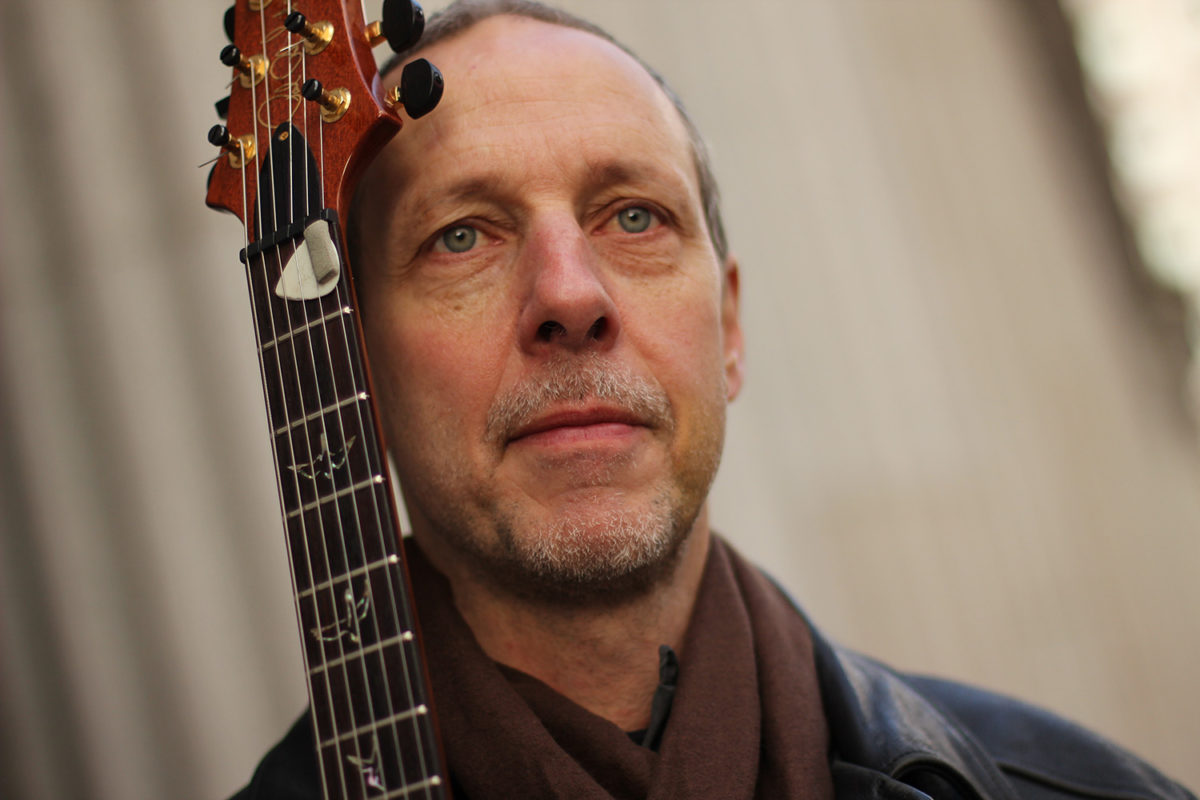
Named a Guggenheim Fellow in 2010, Washington D.C. native Joel Harrison has long been recognized as a highly gifted guitarist, composer, arranger, vocalist and songwriter. A survey of Harrison’s body of work would be a bit like spinning a globe and stumbling on regions with names like Duke Ellington, Hendrix, The Beatles, John Mclaughlin, and Charles Ives. Wielding a focused lens and an ever-increasing courage to take risks with his art, Harrison has quickly blossomed from mentorships with Joan Tower, Ali Akbar Khan and Charlie Banacos into one of the most respected artists of his generation.
Harrison is a two-time winner of the Jazz Composer’s Alliance Composition Competition, and has received support from Chamber Music America, Meet the Composer, the Flagler Cary Trust, NYSCA, New Music USA, and the Jerome Foundation. He has released 17 cds since 1995 as a leader and has appeared high up on the “Rising Star” Downbeat Magazine poll for many years. In 2014 he released Mother Stump (Cuneiform), and finally put himself out front as a guitarist, leading a trio that catalyzes numerous American guitar styles.The newest CD is Spirit House ( Whirlwind Recordings) with a stellar quintet of Cuong Vu (trpt), Paul Hanson (bassoon), and Brian Blade (drums).
His 2013 release, Infinite Possibility, new music for a 19 piece jazz orchestra, received a four and a half star review from Downbeat. AllMusic called it “a stellar exercise in ambition and vision.” Past works include Harrison on Harrison(Highnote, 2005), exploring the music of George Harrison with Dave Liebman, Uri Caine, and David Binney, Free Country (Act, 2003) with Norah Jones, Binney, Gary Versace, and the septet Search (Sunnyside, 2011) with Donny McCaslin, Stephan Crump, and Dana Leong. All display his affection for country, gospel, Indian, modern jazz, classical concepts, and of course his dry sense of humor dispatched with a Zen sensibility.
Harrison has composed several non-improvised works as well, including the PASIC award-winning marimba solo Fear of Silence, and a percussion quartet with piano entitled Faith in Nights. He is the founder and administrator of the Alternative Guitar Summit, a yearly festival devoted to new and unusual guitar music.
The combination of formal Western classical notation with improvised music from jazz, African, and Eastern traditions may be perceived by some as experimental; however, Joel Harrison’s music directly challenges this philosophical model. In fact, Harrison proposes that in the very near future we may come to see many more musicians emerging with equal proficiency and fortitude on both ends of the equatorial and cultural divide, and in deference to a musical climate defined by a directive that averts any social or cultural barrier in its midst. A quote from the spoken poetry of Oliver Lake, from a Joel Harrison project, touches on this astutely: “It’s best just to create it and play it. Put all my music on the same plate!”
Nir Felder Trio
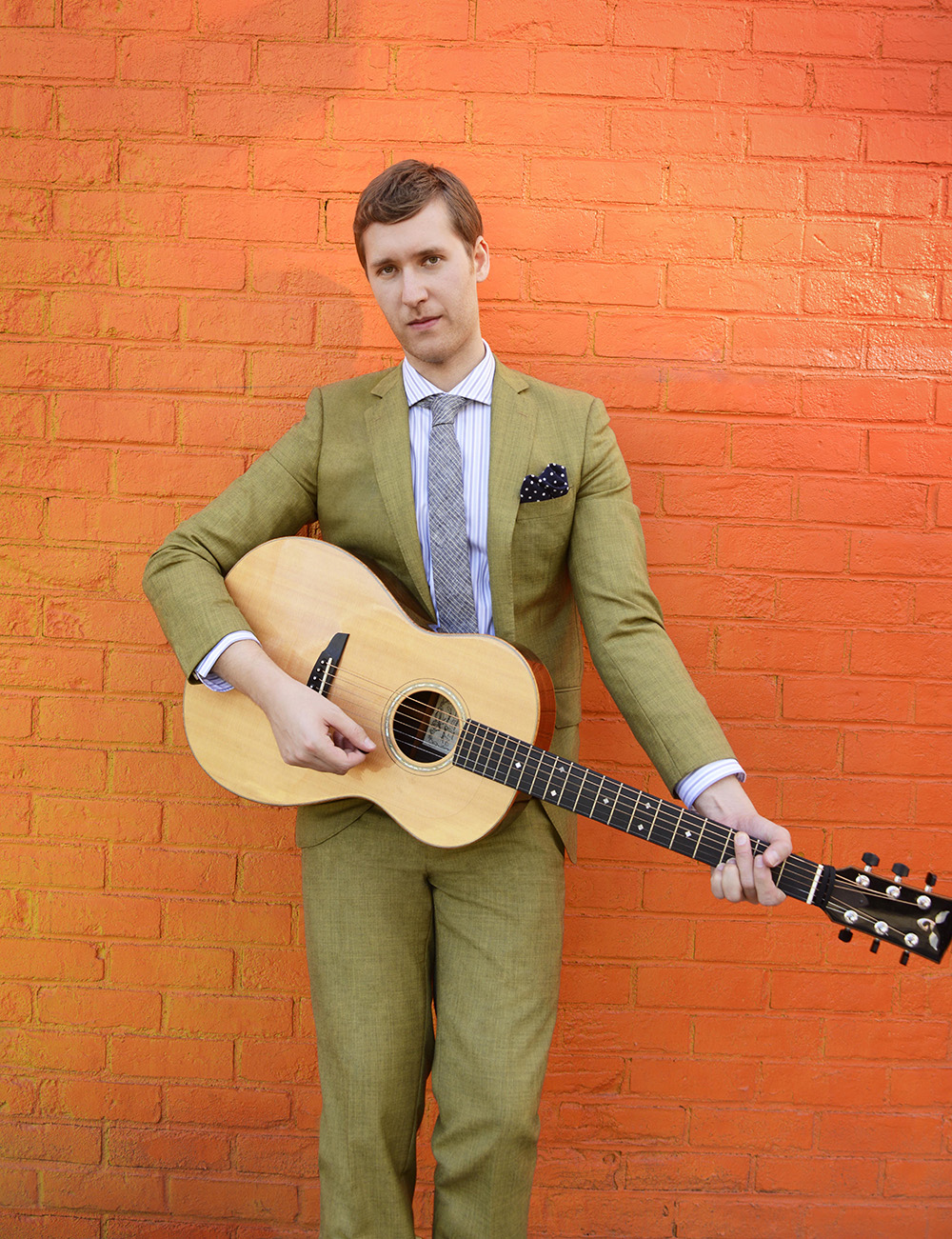
Nir Felder official site | Nir Felder on Twitter | Nir Felder on Facebook
Called “the next big jazz guitarist” by NPR, hailed by the New York Times as a “whiz kid”, and dubbed “incredible” by the Montreal Gazette, Nir Felder is a new voice in jazz guitar. Growing up in the New York City suburbs, Felder spent his youth playing in rock bands while learning about jazz at the local record store, inspired by icons from John Coltrane to voodoo chile Jimi Hendrix. After attending Berklee College of Music on a full scholarship, Felder moved to New York City in 2006 and quickly became one of the city’s most highly sought after sideman, notching credits in bands led by Grammy winner Esperanza Spalding, Terri Lyne Carrington (whose recent release featuring Felder on guitar won a Grammy for Best Jazz Instrumental Album), Jack DeJohnette, Greg Osby, Joey DeFrancesco, Eric Harland, Jose James, Meshell Ndegeocello, and Cindy Blackman and performing with the New York City Opera, Dianne Reeves, Bobby McFerrin, Stanley Clarke, Lizz Wright, Matisyahu, Black Sheep and others at venues including Radio City Music Hall and the Village Vanguard and national television stations NBC and Fox.
Encouraged by praise for his unique sound and style and seeking a more personal creative outlet, Felder formed his own group in 2010, performing sold-out shows in New York City and around Europe. A year long biweekly residency at New York’s 55 Bar followed, where Felder was joined by much of the city’s greatest talent, including Kevin Hays, Aaron Parks, Aaron Goldberg, Uri Caine, Greg Osby, Chris Potter, David Binney, Ben Street, Matt Penman, Scott Colley, John Patitucci, James Genus, Tim Lefebvre, Nate Smith, Mark Guiliana, Shawn Pelton, Ali Jackson, Keith Carlock, Anton Fig, and members of Brazilian Girls, Dub Trio, Snarky Puppy and Kneebody among many others. Says Felder, “I felt like when we played, no matter who was in the band, the audience reacted in a way that let us know that what we were doing was something they felt was missing in their musical experience, something they thought was special. Whether they were commenting on the Fender Stratocaster I played or the compositions or the improvisation, the response was always that this was something new and exciting for them, something they felt strongly about.”
Deciding to end the residency to focus on recording the music that had been developed, Nir brought Aaron Parks, Matt Penman, and Nate Smith into Sear Sound in September of 2011. The group had a strong chemistry and sound that was beautifully captured in two days of recording by engineer Chris Allen. Next, Felder tapped legendary engineer and producer Bob Power (The Roots, Erkyah Badu, D’Angelo, Tribe Called Quest, Meshell Ndegecello) to mix and master the new album. The new release, “Golden Age” (Sony/OKeh), deals with the themes of political, cultural and technological upheaval, with ennui and redemption, with paradise lost and then regained, blurring the lines between jazz and the rock, hip-hop, and pop music Felder grew up listening to.
Mike Moreno Trio
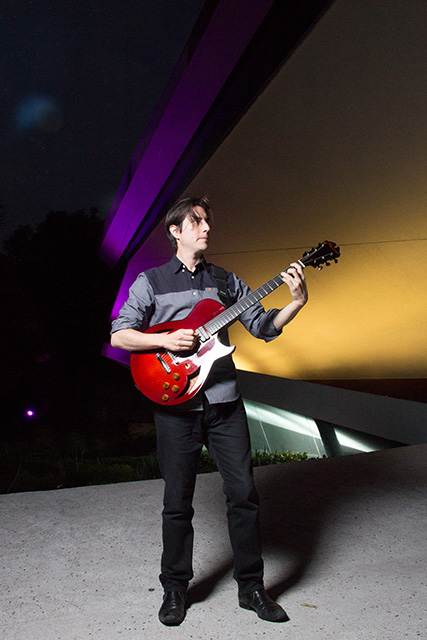
Originally from Houston, Texas, Mike began studying music formally at the Houston High School for the Performing and Visual Arts, a school renowned for its musical alumni, which includes such luminaries as Jason Moran, Robert Glasper, Brian Michael Cox, Eric Harland, Chris Dave, Kendrick Scott, and Beyoncé.
After graduating, Mike moved to New York City with a scholarship to attend the New School University. While still in school he began garnering the recognition necessary to be called to perform and tour with some of the most venerable names in the Jazz world as well as rising stars of the scene.
Over the years, they have included The Joshua Redman Elastic Band, Lizz Wright Band, Nicholas Payton Quartet, Stefon Harris Sonic Creed, Me’Shell N’Degeocello, Jason Moran, Terence Blanchard, Robert Glasper, Ambrose Akinmusire, Gretchen Parlato, Aaron Parks, Claudia Acuña, Greg Osby 4, Wynton Marsalis and the Jazz At Lincoln Center Orchestra, Jeff “Tain” Watts, Jeremy Pelt, John Ellis, Myron Walden, Kenny Garret, Yosvany Terry, Ralph Bowen, Will Vinson and more.
Additionally, Mike has recorded with numerous major artists, both inside and outside of the Jazz genre. 3 of these recordings were nominated for a Grammy. In 2010 both Q-Tip’s “The Renaissance” and Geoffrey Keezzer’s “Aurea” were nominated for Best Album in their categories, as well in 2008 Eldar’s “Re-Imagination” received the same nomination in the Jazz Category. Moreno’s discography also includes artists such as Bilal, Jeremy Pelt, Robert Glasper, John Ellis, Aaron Parks, Jimmy Greene, Myron Walden, Sam Yahel, Ralph Bowen, Marcus Strickland, Yosvany Terry, Kendrick Scott Oracle, Will Vinson, and Bob Reynolds.
Recognized as one of the leading voices in the Jazz guitar world, Mike has toured extensively and recorded as a leader of his own band, playing his original music to high critical acclaim. As Nate Chinen describes in his 2007 The Gig article in JazzTimes, “There are many other guitarists out there pushing towards a modern ideal, but none with the precise coordinates that Mike Moreno has charted.”
In 2007, Mike released his debut CD Between The Lines on the World Culture Music label, which Nate Chinen deemed in The New York Times as one of his top 10 Jazz albums of 2007. He recorded his second and third albums, Third Wish 2008 and First In Mind 2011, for European Jazz label Criss-Cross Records. He returned to World Culture Music for the release of Another Way 2012 which made the 25 “Best of 2012” Jazz Releases on itunes. And his most recent album Lotus has just been released.
Photo Credit: Mónica García
Camila Meza
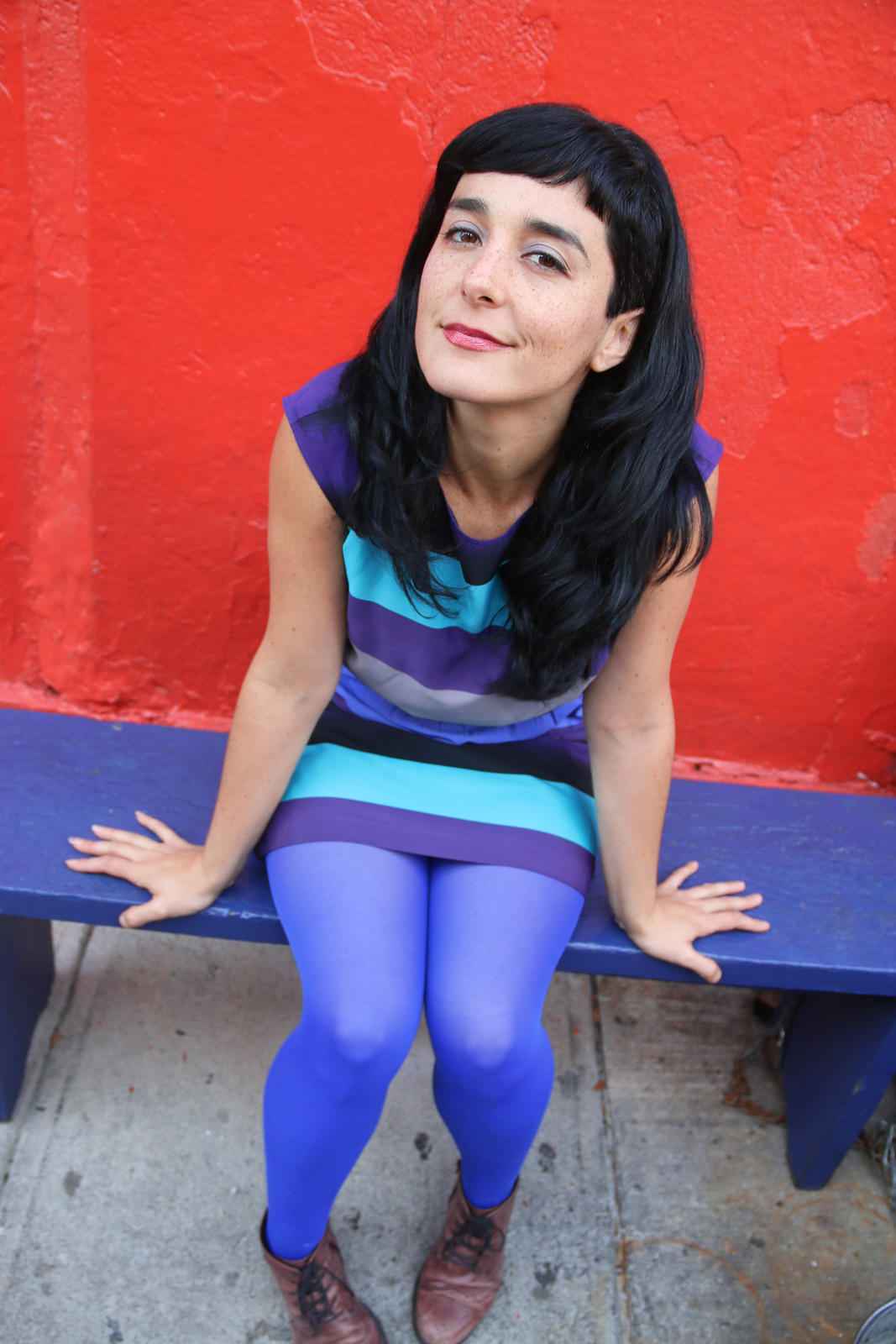
Camila Meza official site | Camila Meza on Facebook | Camila Meza on Twitter
The New York Times has described her as “A bright young singer and guitarist with an ear for music of both folkloric and pop intention, Camila Meza has connected with a strong peer group since moving to New York from her native Santiago, Chile, in 2009″ and adds “”Ms. Meza brings an appealing combination of lightness and depth to all the material, singing in a bright, clear voice against the agile stir of a first-rate band. Her improvising, on electric or acoustic guitar, is serious business . . .”
On Downbeat Magazine “Meza delivered pure, unaffected vocals, sung alternately in Spanish and English, that flooded the subterranean space with a genuine warmth and uplifting spirit. When she soloed on numbers like ‘Para Volar,’ ‘Emerald’ and the enchanting title track of her Sunnyside debut, Traces, it was clear that this triple threat from Santiago, Chile, had more to offer than just a beautiful voice, thoughtful lyrics and refreshing stage presence.”
And All About Jazz have stated “Meza’s reputation as a talented triple-threat-guitarist, vocalist, and songwriter/composer proved true . . .”
During her seven years in the United States, Camila Meza has created a big impact in the New York jazz scene. She possesses an innate and rare combination of qualities as a singer and guitar player, who also writes her own songs and arrangements. She has a highly expressive voice with a unique tamber and way of phrasing, while her improvisations and accompaniment on the guitar are equally touching and soulful. Camila’s music takes us on a joyfully energetic and deep journey full of beauty and adventure. Her Latin American roots and profound connection to jazz combined with the fusions of contemporary and popular music give the music she creates a very special and appealing sound.
Camila Meza belongs to a new generation of jazz musicians that are interested in creating new sounds and allowing diverse influences into their music. With love for this exploration, Camila felt right at home in the diverse and creative jazz scene of New York City. She graduated from The New School for Jazz and Contemporary Music in 2012 where she had the chance to study with masters such as Peter Bernstein, Vic Juris, Sam Yahel, Steve Cardenas and Gil Goldstein amongst others. But even before working with these masters, she began playing with her peers and other musicians of New York, quickly becoming part of the New York community.
“Living in New York has shaped the way I approach my music, and has nurtured me as a person. I’ve discovered things I would never have if I hadn’t been here. It has been a journey both outwards and inwards.”
With an already flourishing career in Chile from the age of 19, by the time she moved to New York at 23, she had already recorded two albums under her name, which received great accolade from jazz media in Chile. Camila quickly started gaining attention in the Jazz scene and started performing on a regular basis at the best jazz clubs and venues in New York such as Jazz Standard, Village Vanguard, Blue Note, Smalls Jazz Club, The Jazz Gallery and Rockwood Music Hall.
An artist with an international reputation, she has already played in festivals and venues all over Europe including Swidnica Jazz Festival in Poland, Hildener Jazz Festival in Germany, Bergamo Jazz Festival in Italy, BMW Jazz Competition in Munich, Bern Jazz Festival in Switzerland and led two nights at the reknown jazz club in France, Duc de Lombards. She has toured as part of singer Sachal Vasandani’s Quartet, pianist Fabian Almazan’s project with Strings with whom she recorded a Blue Note/Artist Share album in 2013 and is the lead singer of trombonist Ryan Keberle’s band Catharsis contributing on two critically acclaimed albums: ‘Into the Zone’ and ‘Azul Infinito’. Camila has performed with jazz legends Tom Harrell, Dave Douglas, as a guest in Paquito D’Rivera’s band at the Patagonia Jazz Festival in Chile and also as a special guest of Aaron Goldberg Trio at The Jazz Standard in New York. Her collaboration with Aaron Goldberg led to her first recording in New York, a six track (EP) of her arrangements of standards, Latin American and Brazilian songs.
Her breakthrough album “Traces” has her showcasing her talents as a composer and excelled singer and guitar player on her debut album for the New York based label Sunnyside Records.
Although neither of her parents are professional musicians, her father, an accomplished journalist, studied music as a teenager but stopped playing half way through his career. In spite of this, Camila and most of her siblings followed the path of the musician. Camila recalls listening to mostly classical music and The Beatles at home. Her brother, a drummer and painter, used to listen to jazz fusion artists, who became very popular in the 90’s in Chile such as Chick Corea, Pat Metheny, John Scofield and John McLaughlin. Although Camila didn’t know who these musicians were at the time, she kept hearing her siblings talk about them and became curious. Saying that, Camila’s initial influences were based in 70’s Rock, including Jimi Hendrix and Led Zepellin. Always “the musician” of the class in high school, she started playing her own compositions with a rock band. As she grew as a musician, she soon started experimenting with more complex harmonies. Her first Jazz icon became Pat Metheny, who’s sound inspired her to buy a hollow body guitar. Later, George Benson’s singing solos solidified her intention to learn and play jazz.
All this passion for learning and discovering music in depth, brought her to attend one of the few popular and jazz music schools in Santiago, Projazz Institute. It was during her first year at the music school in Santiago, that her ear-training teacher, pianist Moncho Romero, who also mentored chilean jazz singer Claudia Acuña, noticed Camila’s natural talent to hear a melody and improvise from it. He invited her to perform at a weekly gig where she developed her skills as a jazz singer playing with a jazz trio. In a matter of a year she had already assimilated the essential elements of jazz singing, by listening to singers such as Ella Fitzgerald, Carmen McRae and Chet Baker. A friend in school gave her “The incredible jazz guitar of Wes Montgomery” as a gift and it was at that moment when she realized that contemporary artists she loved like Pat Metheny and George Benson had been influenced by him.
Soon she started dreaming of accompanying herself on the guitar while singing so she formed her own band where she could develop her skills. It became a pivotal moment in her career. At the age of 22, Camila recorded a set of her favorite standards on “Skylark” (2007), with great critics acclaim. She appeared on TV and toured Chile. After this success she formed a Quintet to perform her own versions of songs and experiment on reshaping, rebuilding and re-interpreting songs into her own voice. With this band, she released “Retrato” (2009) where she covered some of her earlier influences: Bjork, Joni Mitchell, Led Zeppelin and also some Latin American influential composers such as Chilean singer-songwriter Victor Jara and Brazilian musician Ivan Lins. In 2013 she released a 6-track album called “Prisma” which, like “Retrato”, also features her very unique vision as an arranger. She had the chance to record with a stellar band featuring pianist and co-producer Aaron Goldberg, chilean bass player Pablo Menares, drummer Clarence Penn and saxophonist John Ellis.
With a wide palette of influences Camila keeps discovering new sounds and inspirations. The last three years have been creatively very important for Camila, in which she has begun writing her own songs, where she is able to portray her experiences and unique voice. She has also recently started a new collaborative project with Israeli bass player and arranger Noam Wiesenberg; ” The Nectar Orchestra”. It features Camila’s compositions with a string quartet and an earthy acoustic sound.
Music for Camila is essential. She says “I hope to be able to connect on a deep level with the people that listen to me – outside of preconceptions of genre, style and language. I see music as one of the most universal expressions of human beings, that when is present, we’re all equal and it can free us, that’s why I think is so important to the world.”

